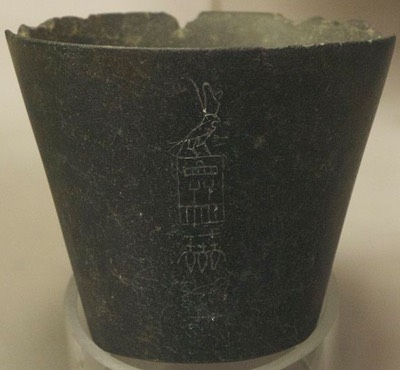Very little is known about Hotepsekhemwi, who Manetho has placed at the start of the 2nd Dynasty. Although the Turin King-List does not distinguish between the first five dynasties, which could imply that every king from this period was part of the same royal family, the relationship between Hotepsekhemwi and his predecessor, Horus Qa’a, is not known.
The name of his wife is also not know, but a “son of the king” and priest of the god Sopdu, named Perneb, may be his son.
Hotepsekhemwi may have come to power during, or, as his name “the two powers are at peace” seems to suggest, a period of conflict. The appearance of the names of two kings, Horus Ba and Horus Seneferka -the latter believed by some to have been an alternative name for Qa’a- towards the end of the 1st Dynasty may confirm that there was some upheaval prior to Hotepsekhemwi’s reign. There are indications that the tomb of Qa’a at Umm el-Qa’ab was robbed shortly after the king’s burial, and that it was subsequently re-closed by Hotepsekhemwi. In doing so, Hotepsekhemwi may have attempted to show himself to be the proper successor.
According to Manetho, Hotepsekhemwi ruled for 38 years, while the Turin King-Lists grants him a very unlikely reign of 95 years. Based on the traces he left behind, Hotepsekhemwi’s rule is estimated to have lasted for about 25 years. During this time, the cult of the god Akhti or Netjer-Akhti, a solar god whose name literally means “Horizon-dweller”, became more important.
The cults of Lower-Egyptian gods such as Bastet and Sopdu appear to have received some attention as well, prompting some Egyptologists to postulate a Lower-Egyptian origin for Hotepsekhemwi.
He also appears to have founded a new royal estate named “The star of Horus rises” (or “Horus, the rising star”).
For his burial, Hotepsekhemwi chose to break with some 1st Dynasty funerary traditions. Although he did bury or re-bury his predecessor at Umm el-Qa’ab, he chose Saqqara, close to the capital of Memphis and close to the tombs of the high officials that served the kings of the 1st Dynasty, as the location for his own burial. The structure of the tomb believed to have been his, no longer consists of a series of pits dug into the ground, but of a series of underground galleries connected by corridors and leading to the burial chamber. There is no trace of subsidiary graves connected to his, and thus the 1st Dynasty custom of retainer sacrifice had come to an end.
